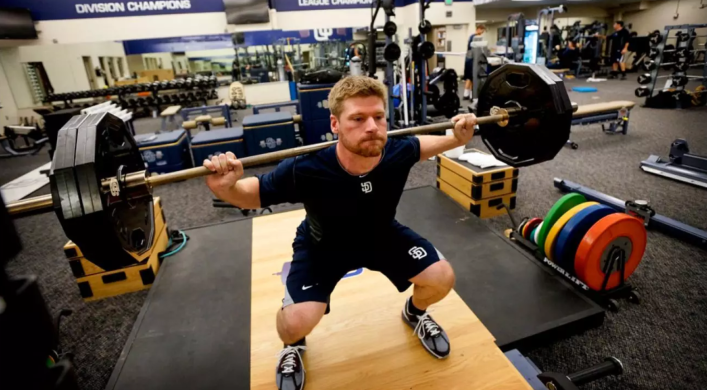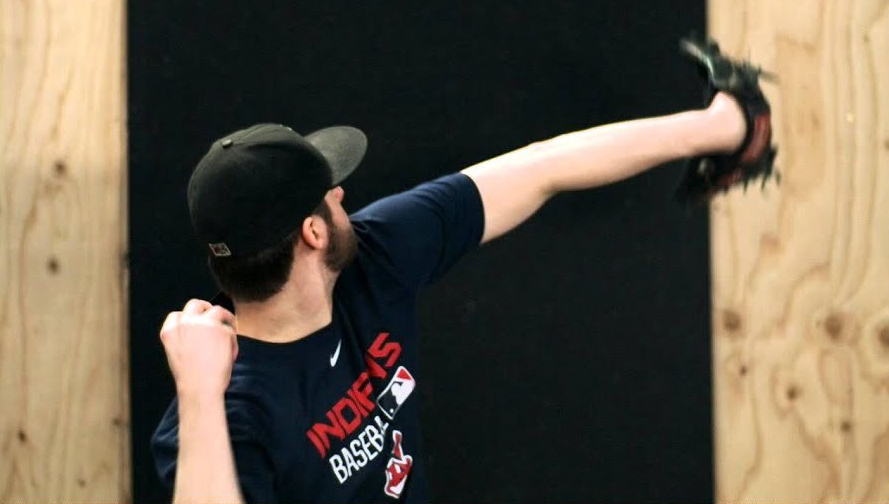
Many athletes out there look for a “quick fix” in training. They are drawn to claims like “add 5 mph in 5 weeks,” but in reality you can never be certain of results like this (which I talk about in this post). It is very possible to do one of these “add 5 mph” programs on the internet and either plateau or lose velo, and you really shouldn’t trust anyone who “guarantees” that you will make progress. Aside from being scams to take your money a majority of the time, these programs miss the fact that every athlete is different. Instead of putting everyone on the same “cookie-cutter” program, any good coach or trainer should put each individual athlete on a program that is optimized for him or her. For example, if player A can’t squat his own bodyweight but player B can squat 405 for reps, player A and player B shouldn’t have the same strength program!
Thankfully, there are a lot of good programs out there that take individualization into account. Some of the facilities I’ve worked with in the past (and continue to work with now in some cases) that do a good job of this are Driveline Baseball, Prime Athletics, and the Florida Baseball Ranch, and there are many other excellent training facilities throughout the U.S. as well. This article on Driveline’s blog goes into more detail about their assessment process and how they use data to build individualized programs for each athlete. It’s safe to say that Driveline (and the other facilities I mentioned above) do a good job of accounting for each athlete’s specific needs.

I believe that many athletes stop here though, when there is another “layer” of individualization that goes beyond just some assessment process or program. This “layer” that I am referring to is the freedom that an athlete has to make small modifications to his or her program through experimentation, as well as trial-and-error. Often times, an athlete will see a program written out and think that they must do this exact program verbatim, without any small deviations being possible. I don’t think that this is the best approach in a lot of cases because it robs an athlete of the ability to think critically about how to optimize his/her training and try things that may help in getting closer to this “optimal” program. If an athlete just blindly follows a specific program to a “T” with absolutely no thought for himself/herself, then the athlete looses a lot of freedom. While it is certainly possible to make progress doing this, it is very unlikely that you will progress as fast as possible, since this program as written is unlikely to be the truly “optimal” one for you.
If, on the other hand, you are willing to “branch out” and experiment a bit, then you could indeed find (or come closer to finding) the “optimal” program for you. This is often more difficult, however, and requires a lot more deep thought about exactly what specific drills, lifts, corrective exercises, etc. work best for you. This is the biggest reason why I believe many athletes shy away from doing this very much, because they would rather not have to deal with this trial-and-error process. It is certainly a lot “safer” to just follow your program as written, but in my opinion there is a lot more to be gained by being creative and trying different modifications that might work better for you.
Specific examples

I’ve talked a bit about why this “branching out” from a program is important, but what really matters is how it can be applied to specific scenarios. One of the simplest examples is modifying plyocare drills (or other throwing drills) to better match what you are specifically trying to work on. Let’s say you are trying to improve your lead leg block, but your hip/shoulder separation is already pretty solid. In this case, it might make sense to add a few reps to rocker throws, and take away a few reps from roll-ins. This might sound very simple and straightforward, but this is already a step towards creativity and a step “outside the box” of the written program! The next “level” above this is actually changing certain aspects of the drills themselves in order to suit your needs. If, for example, you need to work on some aspect of your arm action but are struggling to get a feel for it from the constrained motion of a standard pivot pick-off throw, then you might try incorporating a full arm action or experimenting with different ball weights to see what kind of an effect it has. Tread Athletics has a few YouTube videos on the topic, and this one on roll-ins is a really good example of how this trial-and-error process can look (at one point in the video Ben discusses how he struggled to get the feel for a traditional roll-in and developed a “stationary roll-in” as a substitute when he was in college).
This creativity doesn’t need to be limited to throwing either: strength routines, warm-up routines, mobility routines, etc. can all be modified! Rob Hill, who is a trainer at Driveline that I met when I was there last summer, talks about this in this tweet. As you can see, Rob is trying out a bunch of random med ball throws that aren’t written down in any kind of program or tracking software. By allowing himself this freedom to experiment with different med ball variations, he’s creating some pretty athletic movements on these throws! The point here isn’t that you have to do the exact med ball drills that Rob is doing, or even that you have to modify your med ball work at all, it’s just that a lot of good can come from experimenting and thinking outside of the box in this way. John Snelten, owner of Prime Athletics (which is where I train now that I am home), also loves to experiment with all kinds of different training methodologies and approaches. Recently, he’s been working in a lot of blood flow restriction (BFR) to recover from hard training, and has noticed a significant benefit. Again, the point isn’t that you have to do BFR, just that you should always be open to trying out new and different training modalities.
My week of training
This idea of experimenting and thinking outside the box is pretty relevant to my training right now (and it pretty much always is), as I’ve been working in a few different drills/modifications within the past week or two. One new drill that I’ve been experimenting with a bit is the drop back (with both a med ball and as a plyocare drill on certain days). I first saw this drill on Kyle Rogers’s twitter (in this tweet), and it’s helped me get the feel of hip/shoulder separation down a bit more. It’s still not all the way there, but I think I have a much better idea of what I am trying to feel thanks to a conversation I had with my Driveline online trainer Dean Jackson. Dean basically suggested after looking at the video below that my torso is actually rotating on time, but my hips are rotating late and not opening up at stride foot contact. If you look carefully, you’ll probably be able to see what I mean (pause the video when my front foot hits the ground and see where my hips are).
Dean suggested that I should focus on roll-ins as the main fix for this, but I’ve also found that drop back throws have been helpful, and I’ll probably want to get them “officially” added into my program soon. This video was taken last Friday (6/21), and so I haven’t had a ton of time to work on this, but even in this past week there have been some positive signs. This past Friday (6/28), I had a mound velo with 4, 5, and 6 oz balls, and I was throwing my 4 and 6 oz balls harder than in previous weeks (my 6 oz was up to 85 and my 4 oz was up to 90), although my 5 oz was still stuck at 86. What’s weird is that in previous weeks my 6 oz is typically 3+ mph below my 5 oz, and my 4 oz is typically the exact same speed as my 5 oz, so hopefully my 5 oz goes up next week.
On the strength side, things are going very well, and I hit PR’s on all 3 lifts over the course of the past week or two (bench 215×3, squat 295×3, hex bar deadlift 485×3). I’ve been doing back squats instead of front squats recently because I’ve noticed front squats put a lot of pressure on my wrists and I also am generally unable to progress them very quickly, whereas back squats do not have these issues. The nice thing about strength training is that progress is generally a lot more consistent, whereas throwing training can involve long plateaus and drops in velocity at times. Ideally, these strength trends will continue, and my throwing will rebound soon!
Image credits: https://www.si.com/edge/2014/05/21/10-key-weight-training-exercises-mlb
https://twitter.com/drivelinebb/status/1047562944136077313
https://www.drivelinebaseball.com/2015/05/explaining-the-elbow-spiral-in-the-pitching-delivery/